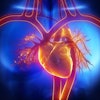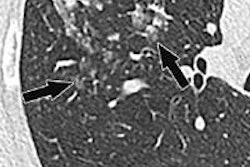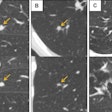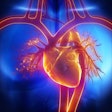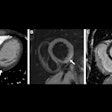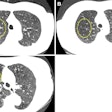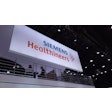Medicare payments have been approved for CT lung cancer screening. But what happens now? For radiologists, screening for lung cancer is every bit as challenging now as it was two weeks ago, and for all its benefits, it's a service that is not expected to be anybody's profit center, lung cancer experts told AuntMinnie.com.
The radiology community breathed a collective sigh of relief with the November 10 announcement that the U.S. Centers for Medicare and Medicaid Services (CMS) will reimburse for lung cancer screening services all the way through age 74 -- in effect paying heed to screening advocates by maintaining lung cancer screening services for Medicare patients during the years when individuals are at highest risk of the disease.
But there is much to do toward establishing programs that are run well enough to take advantage of the mortality gains shown in the 2011 National Lung Screening Trial (NLST), as is required to be eligible for Medicare payment under CMS guidelines. Accreditation, shared decision-making visits, radiation dose monitoring, national registries, nodule follow-up, biopsies of suspicious lesions, and the rest.
Kicked out of the pool
Did the CMS decision give radiology everything it wanted? In a word, no. As thoracic surgeon Dr. Fred Grannis noted in a Second Opinion article on AuntMinnie.com last week, tens of thousands of people at high risk for lung cancer were kicked out of the screening pool with CMS' decision.
Not eligible for screening are people who have ever had a cancer of any kind, as well as seniors 75 years and older on Medicare, who actually get lung cancer at higher rates than 74-year-olds. Individuals with chronic obstructive pulmonary disease (COPD) and bullous emphysema, unless they are otherwise eligible, won't be reimbursed for screening.
Absent a final ruling that includes these high-risk individuals, "professional and advocacy groups must urge CMS to make the system equitable, responsible, and compassionate," Grannis wrote.
Dr. Ella Kazerooni, professor of radiology at the University of Michigan and chair of the American College of Radiology's (ACR) Lung Cancer Committee, said she was thrilled to see the ruling but nevertheless had qualms about some of the details.
For example, radiologists would need experience interpreting a minimum of 300 screening studies to serve in lung cancer screening, while NLST readers did fine with a minimum of 200 cases, she said.
As for age, the proposed rule "only goes up to age 74, while we were recommending going up to age 80" per the December 2013 U.S. Preventive Services Task Force (USPSTF) decision, she told AuntMinnie.com. And the mandated radiation dose limit is 1.5 mSv per exam, "but our practice parameter is 3 mSv because you've got large-patient and small-patient protocols, and that's going to be a quality metric to follow."
"There are a few small issues, but overall it's a huge win," she said. "We'll respond to some of these issues, but I can't see CMS going back" to not covering the exam for seniors.
The limitations on eligibility aren't a big problem, said Dr. Denise Aberle, NLST principal investigator and professor of radiology at the University of California, Los Angeles.
"Overall, CMS made a measured and conservative proposal to support low-dose CT lung cancer screening," Aberle wrote in an email. "This was based on one well-designed randomized trial -- the emphasis being on both 'well-designed' and 'one.' "
It's also important to consider that the at-risk population for lung cancer is large, the costs are not trivial, and the extension from three annual screens in NLST to continuous annual screens in the CMS guidelines is based on modeling rather than experience, all of which makes the translation from efficacy to effectiveness unknown, according to Aberle.
"I tend to see this process as evolutionary, with this being the terms of initial implementation," she wrote.
The rules of the road
Under CMS' proposed rule, radiologists must be certified with the American Board of Radiology or an equivalent organization, they must have documented training in diagnostic radiology and radiation safety, and they must have been involved in the "supervision and interpretation" of at least 300 chest CT scans in the past three years, as well as documented CME in accordance with ACR standards.
In addition, screening centers must have participated in past lung cancer screening trials such as NLST, or be accredited diagnostic imaging centers with "training and experience" in lung cancer screening with low-dose CT, CMS proposed. They must provide scans at 1.5 mSv or less radiation, and they must collect and submit data for each scan to a "CMS-approved national registry."
Additional requirements include patient identification and demographic information and the radiologist's national provider identifier, as detailed in the November 10 proposed decision memo.
How will the registries work? And how many registries can meet the standards?
"We expect ... that CMS will set criteria for how registries are going to work, and places can apply," Kazerooni said. "It would be more than one registry; it's very unusual for something this large to have a single-source registry."
The ACR's registry is already half built because the National Radiology Data Registry (NRDR) is already in place, and it is already approved by CMS for Physician Quality Reporting System (PQRS) quality reporting, Kazerooni said. The NRDR already has breast, colonography, and PET registries, among others. In addition to ACR, other institutions such as perhaps Kaiser Permanente and other kinds of professional organizations may also apply to offer designated registries, she said.
"As the draft policy becomes formal, which is expected in early February, then CMS has to put in place billing codes and work with all its regional offices to roll this out," she said.
As part of this, CMS may decide to backdate payments to the coverage initiation date in February, so it might take CMS until June or July to actually operationalize the program, she added.
"CMS is going to have to be very clear on what criteria these registries are going to have to meet, but we gave them very detailed lists in all of our discussions with them," Kazerooni said.
Questions about shared decision-making
In its November 10 memo, CMS also proposed that screening candidates receive a "shared decision-making" visit, to be paid for separately from the screening exam visit. It will consist of a talk between the candidate and a doctor or physician assistant or nurse practitioner, who will discuss the benefits and risks of lung cancer screening as they pertain to the patient's own circumstances. According to Kazerooni, it's an area that needs fleshing out as the proposed rule becomes final.
"Shared decision-making is a process that I think doctors perform in their offices every day with patients, and if there's detailed documentation pertaining to this visit, I'm a little unclear as to what that really means, because the things that are described for decision-making are things people do every day," she said. "They just don't check boxes to say they said 'A' or 'B' or discussed 'E.' "
And given that such things are routine, how do you separate shared decision-making from any other visit?
In a September editorial in the Journal of the American Medical Association that likely influenced CMS, Robert Volk, PhD, from MD Anderson Cancer Center advocated for the shared decision-making visit as a requirement for screening, arguing that the process could be made quite simple and efficient (JAMA, September 24, 2014, Vol. 312:12, pp. 1193-1194).
The editorial reviewed questions posed about lung cancer screening during CMS' Medicare Evidence Development and Coverage Advisory Committee (MEDCAC) meeting held April 30. MEDCAC was concerned about whether patients understood the risks and benefits of screening. The MEDCAC panel had included a question about the MEDCAC members' confidence that the benefits of CT screening outweighed its harms, and members' confidence that those harms would be minimized.
In their JAMA editorial, Volk and colleagues noted that USPSTF, in its December 2013 recommendation of lung cancer screening, endorsed the principles of shared decision-making between patient and provider to ensure that individuals choosing CT screening are fully informed of the benefits and potential risks. USPSTF recommended that it be implemented for all individuals as a condition of undergoing screening. How would this appointment, conducted more often than not by primary physicians, play out in practice?
"One strategy that has been proven and that I think would work well in the screening context is a patient decision aid -- a tool that summarizes the evidence about the choices that a patient faces, presents the evidence in a complete and balanced way, and begins to help the patient think about what's important to them or their values in making a decision," Volk told AuntMinnie.com in a September interview.
The decision aid can be thought of as an adjunct to the clinical encounter, he explained. In the clinical encounter, the clinician would sit down with the patient and explore his or her understanding of the options, correcting misconceptions and answering questions to help the patient arrive at an optimal strategy.
But Kazerooni questioned the validity of Volk's approach of using a tool to evaluate lung cancer screening candidates.
"On the one hand, it is simply codifying the discussions that patients and physicians already have about their care or should be having," Kazerooni said. "And turning this into a computer tool for patients could end up like an electronic version of a paper brochure that gets clicked through quickly just to get to the test. Some people will just pay lip service and check the box, and other people will do what's intended."
To be sure, questions about what issues should be discussed are easily built into electronic medical records, but that doesn't mean that the process can be reduced to a few hurried questions. The checklist is a good way to ensure that every question is covered, but the questions should be covered in the context of a doctor-patient relationship in the patient's "healthcare home," Kazerooni said.
"Fundamentally, physicians should have informed discussions with their patients in everything they do," she said.
In any case, lung cancer screening will soon transition from a specialty-ordered test where awareness of screening is highest, to a test ordered by primary care physicians, where the knowledge of screening may be less comprehensive, according to Kazerooni.
The great thing about this transition is that primary care doctors manage the patient's healthcare on a daily basis and know if the patient has too many comorbidities to undergo CT lung cancer screening, or if the patient's life expectancy is too short to make screening a practical option. For all of these questions, the primary care physician is the "person who would know best," she said.
To comment on CMS' proposed decision by December 10, click here.

